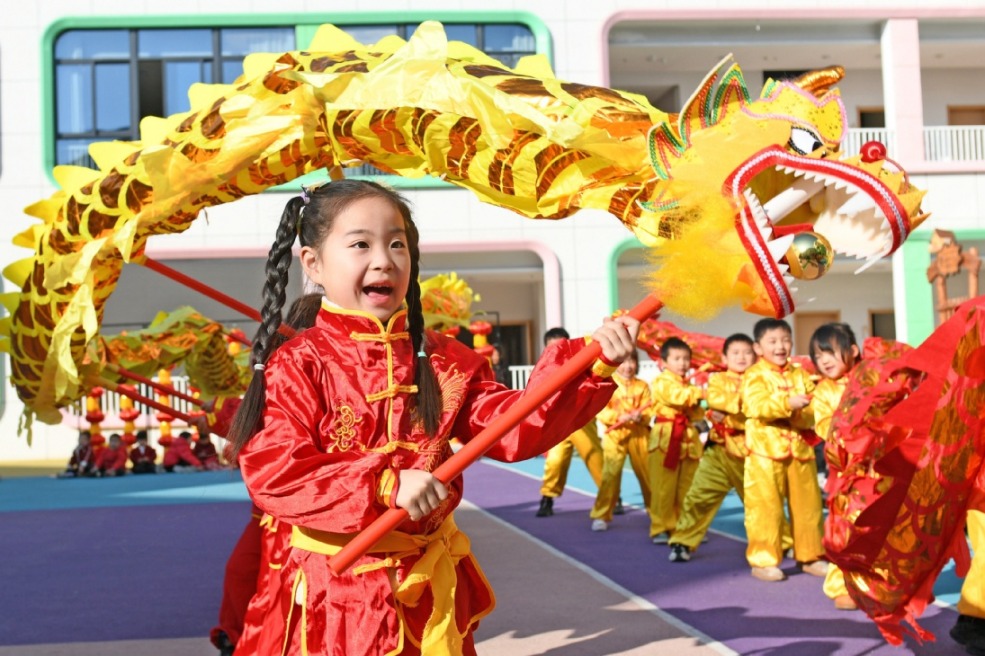Regional holiday rituals leave lasting memories
Mouth-watering offerings mark a festival where family reunions and taste buds take priority, Li Yingxue reports.


At Zhiguan Courtyard, Chang offers this Manchu snack on the menu, alongside a selection of classic northeastern dishes for this year's Chinese New Year's Eve dinner.
"Northeast China offers both mountain delicacies and seafood. We aim to showcase the finest ingredients from Northeast China to our guests this Spring Festival," he adds.
In Hengyang, Hunan province, two dishes are indispensable on the Chinese New Year's Eve table — Tutouwan (a layered savory dish) and stir-fried pork with chili. Gu Qinghai, 44, product development manager for the Chef Fei (Feidachu stir-fried pork with chili) restaurant chain, recalls that these dishes were once only enjoyed during the holidays.
After more than 20 years in the culinary industry, Gu notes that stir-fried pork with chili is available every day in over 160 Chef Fei's locations nationwide. However, each time he eats it, he is reminded of his hometown and the memories of Spring Festival celebrations.
"Hengyang is famous for its stir-fry dishes and stir-fried pork with chili is one of our signatures. I hope it becomes widely recognized," Gu says.
Unlike the pork dish, Tutouwan is still welcomed within Hengyang. For Gu, it's a dish his mother would make exclusively for the Spring Festival holiday. "It's a complex dish with many layers of ingredients, including fish balls made from grass carp, symbolizing abundance and prosperity," he explains.
Tutouwan is believed to have over a century of history, with its origins traced back to Qing Dynasty (1644-1911) general Peng Yulin, whose hometown was Hengyang. Legend has it that the dish was created by a family chef from Hengyang, who first served it to Peng when he invited an important guest to dinner.
The dish is crafted from ingredients like sweet potato balls, egg strips and red dates, all layered into a bowl. The seven layers form a delicate tower, symbolizing progress, wealth and family unity. Its preparation involves many techniques, including steaming, boiling and frying, along with intricate steps like kneading and mixing.
Locals believe a Chinese New Year feast isn't complete without the dish. It is traditionally the first dish served at any banquet, symbolizing the importance of the meal and ushering in a year of fortune and family togetherness.
























